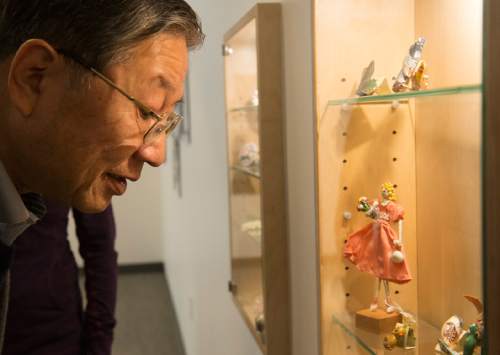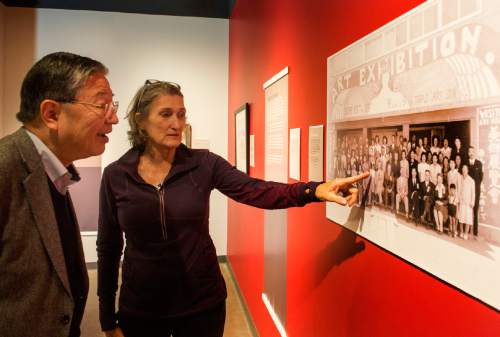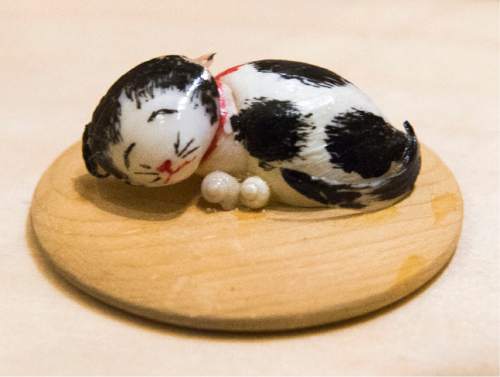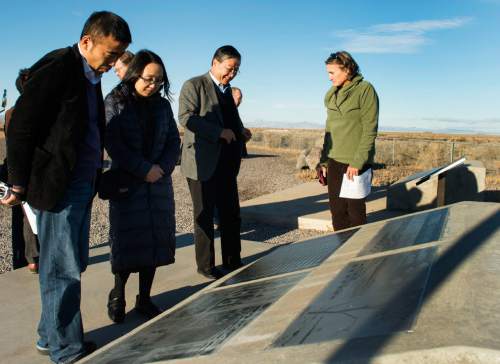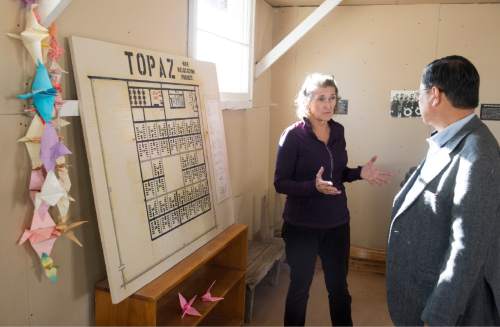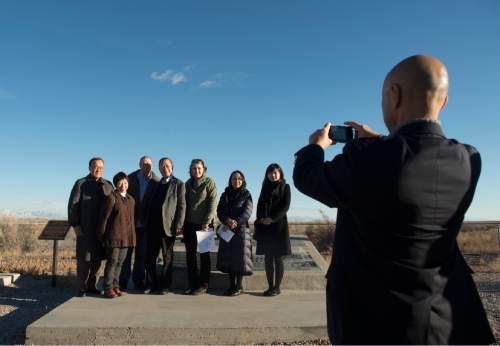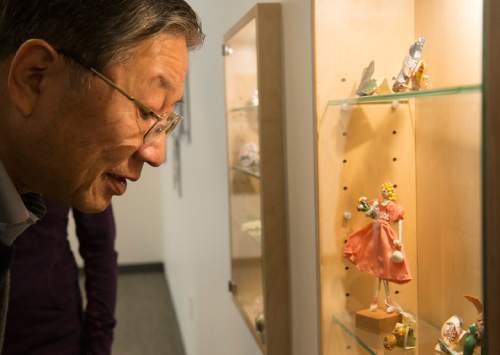This is an archived article that was published on sltrib.com in 2015, and information in the article may be outdated. It is provided only for personal research purposes and may not be reprinted.
Delta • Ken Shimanouchi has spent a lifetime in the diplomatic service of his country, Japan, but on Wednesday he came to the place where his grandparents spent a short, presumably fraught period of their lives: the Topaz internment camp.
Shimanouchi, who served as Japan's ambassador to Spain and then Brazil before retiring in 2010, toured the Topaz Museum here and the swath of desert that once was filled with barracks and mess halls, schools, a hospital, even a tofu factory. Only the four-strand barbed wire fence and dirt roads remain.
Topaz was one of 10 camps where the U.S. government forced 110,000 people of Japanese ancestry to live during World War II. Those living along the West Coast had to leave behind their homes and businesses and move to internment camps because the U.S. government questioned their loyalty after Japan attacked Pearl Harbor on Dec. 7, 1941.
The camps are regarded as a sad episode of civil-rights abuse in America. An estimated two-thirds of those interned were American citizens. Topaz held 8,316 people at its peak, but more than 11,200 Japanese-Americans lived there for varying periods of time.
Shimanouchi's grandfather, who had been a journalist for a Japanese language newspaper in the San Francisco Bay Area, died of a brain hemorrhage at Topaz on July 3, 1943. He was 66. Shimanouchi's grandmother, whose three daughters left the camp before she did in August 1944, eventually took her husband's cremated ashes back to the Bay Area.
Shimanouchi and four citizens of Japan are on a "Walk in U.S., Talk on Japan" tour of Colorado and Utah, the 12th in a series organized by Prime Minister Shinzo Abe to foster friendships and trade with Americans. On Thursday and Friday, the delegation will go to college campuses and meet with prominent Utahns of Japanese descent.
On Wednesday, they saw the art made by internees, including oil and watercolor paintings, woodblock prints and jewelry made from found seeds and shells. The new museum opened with the art show last winter, but the permanent collection is still being prepared.
That Americans would remember such a dark moment in U.S. history with a museum and historic marker speaks well of this country, Shimanouchi said.
"Probably the United States is the only country in the world that would do something like this," he said.
Shimanouchi learned something new at the Topaz Museum on Wednesday: Two of his aunts, then young women, married while in camp. The final accountability report kept by the government recorded those aunts as leaving in the spring of 1943, only a few months after they arrived from the Bay Area, said Jane Beckwith of Delta, president of the Topaz Museum Board. One went with her husband to Salt Lake City, the other to New York City.
A third aunt, who helped set up the Topaz camp library, left a month after her father died. She had been accepted into a graduate program at Smith College in Massachusetts.
The government let internees leave if they had jobs lined up that were not on the West Coast, if they were enrolled in colleges or enlisted in the Army.
Shimanouchi's father was older and, unlike his younger siblings, not an American citizen. His parents had emigrated to the United States in 1912, when he was 3. They lived first in Los Angeles, then San Francisco, and after he graduated from Occidental College, he went back to Japan to find work. A younger brother followed him, renouncing his U.S. citizenship.
Shimanouchi's grandmother went back to the Bay Area after the war and worked as a domestic helper. She died in 1971.
He doesn't recall whether his grandmother was bitter or sad over her time at Topaz. She often mentioned losing her husband, though, and one other thing: She hated a canned meat product that was common in camp.
Shimanouchi was born in Japan in 1946, a year after the war ended, and his grandmother lived with his family for several years when Shimanouchi's father, also a diplomat, was based at the Japanese embassy in Washington, D.C. That was from 1954 to 1961, not long after World War II ended.
Shimanouchi said he had long wanted to visit Topaz, and the museum that remembers it. They are "a monument to an extraordinary country we admire so much and to how far relations have evolved," he said. "We were enemies until 1945. We are now the closest allies."
Twitter: @KristenMoulton —
More online
O Find more pictures from the visit online. › sltrib.com


